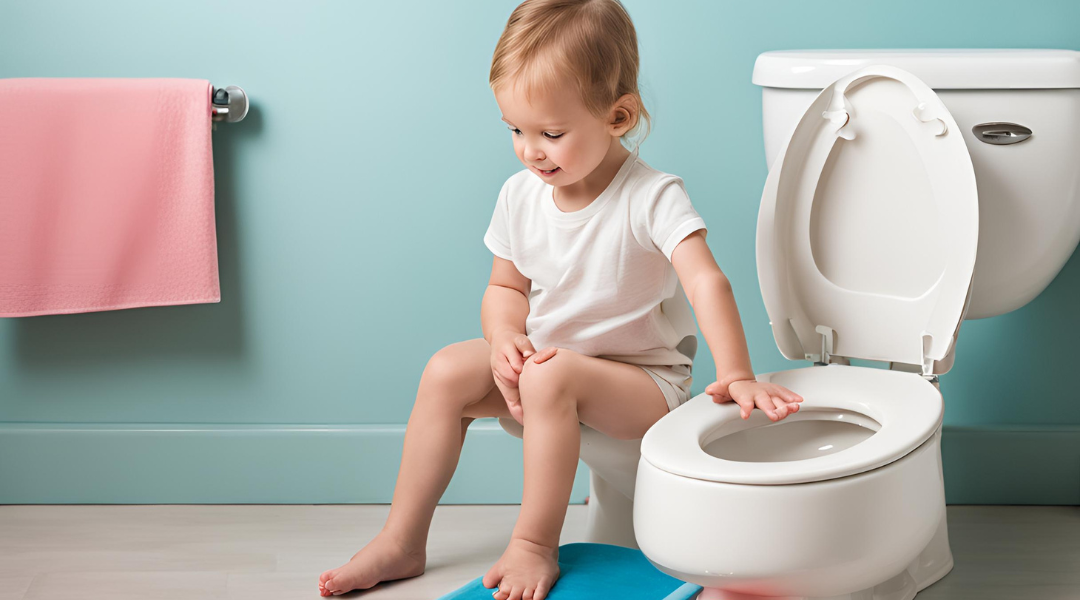Toilet training is an important milestone in a child’s development. Parents often wonder When to Start Toilet Training for Kids? Understanding when to begin toilet training for kids can make the journey smoother and more successful. This blog will help you recognize the signs of readiness, prepare for training, and choose the best methods for your child.
Understanding Readiness
1. Signs of Physical Readiness Children show physical readiness for toilet training when they can stay dry for longer periods and have regular bowel movements. If your child wakes up dry after naps or stays dry for at least two hours during the day, it may be time to consider toilet training.
2. Signs of Emotional Readiness Emotional readiness is just as important as physical readiness. Look for signs that your child is interested in using the toilet, such as watching you use the bathroom or expressing discomfort with dirty diapers. They may also start to tell you when they need to go.
Age Considerations
3. Typical Age Range Most children are ready for toilet training between 18 and 24 months, but it’s normal for some to be ready earlier or later. Every child is different, and it’s essential to consider their unique development and readiness.
4. Cultural and Individual Differences Cultural practices can influence when and how children are toilet trained. Some cultures start earlier, while others wait longer. It’s important to understand and respect each child’s individual timeline and cultural background.
Preparing for Toilet Training
5. Gathering Supplies Before starting toilet training, gather essential supplies like a potty chair, training pants, and wipes. A potty chair can make the process more comfortable and less intimidating for your child.
6. Creating a Supportive Environment Set up a bathroom space that is comfortable and accessible for your child. Place the potty chair in a convenient location and ensure that your child can easily reach it.
7. Introducing the Concept Talk to your child about toilet training and what it involves. Use simple language to explain the process. You can also read books or watch videos about potty training together to make the concept more familiar and less scary.
Methods and Techniques
8. The Gradual Approach The gradual approach involves easing into toilet training step by step. Start by having your child sit on the potty chair fully clothed, then progress to sitting without a diaper. Gradually encourage them to use the potty for its intended purpose. This method can reduce anxiety and build confidence.
9. The Intensive Method The intensive method involves a more focused, quick approach to toilet training. This might include spending a few days dedicated to training, with frequent potty breaks and lots of encouragement. While this method can be effective, it requires a lot of attention and patience.
10. Positive Reinforcement Use rewards and praise to encourage your child’s progress. Simple rewards like stickers, small toys, or extra playtime can motivate them to use the toilet. Always offer praise and positive reinforcement to build their confidence and encourage good habits.
Overcoming Challenges
11. Dealing with Accidents Accidents are a normal part of toilet training. Handle setbacks with patience and positivity. Avoid punishment and instead, calmly clean up and remind your child that accidents happen. Consistency and encouragement will help them learn.
12. Managing Resistance If your child resists toilet training, try to understand their concerns. Sometimes, taking a break and trying again later can help. Keep the process fun and stress-free, using games, songs, or favorite toys to make it more enjoyable.
13. Consistency and Routine Maintain a consistent toilet training schedule to help your child develop a routine. Regular potty breaks, especially after meals and before bedtime, can reinforce good habits. Consistency helps children understand what is expected and makes training more effective.
Conclusion
By recognizing the signs of readiness and preparing properly, you can make toilet training a positive experience for your child. Remember that every child is different, and patience is key. Start observing your child’s readiness and prepare for this important milestone with confidence.
FAQs
-
- What is the best age to start toilet training?
Most children are ready between 18 and 24 months, but every child is different. Look for signs of readiness rather than focusing solely on age.
- What is the best age to start toilet training?
-
- How long does toilet training usually take?
The duration varies for each child. Some may take a few weeks, while others might need several months. Patience and consistency are key.
- How long does toilet training usually take?
-
- What if my child is not interested in toilet training?
If your child shows no interest, it’s okay to wait a few weeks and try again. Forcing them can create resistance. Keep the process positive and low-pressure.
- What if my child is not interested in toilet training?
-
- How do I handle toilet training accidents?
Treat accidents calmly and with patience. Clean up without fuss and encourage your child to try again. Consistent positive reinforcement will help them improve.
- How do I handle toilet training accidents?
- Can I toilet train my child at night simultaneously?
Nighttime training can be more challenging. It’s often best to focus on daytime training first and introduce nighttime training once your child is consistently dry during the day.




